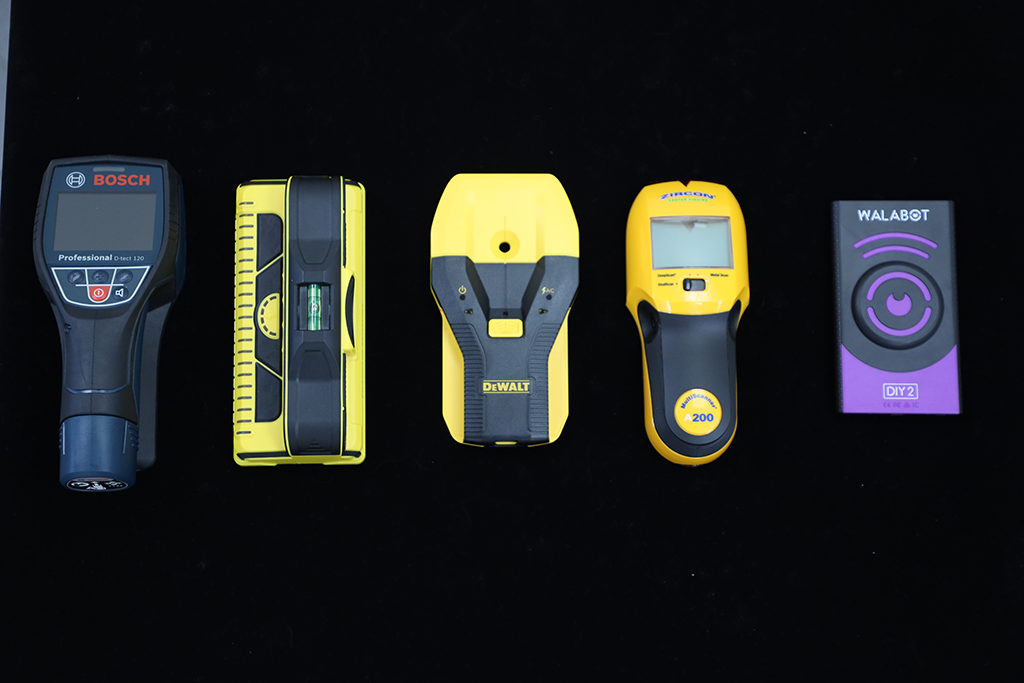Hanging pictures, shelves, and TVs requires finding those hidden heroes within your walls – the studs. And stud finders have come a long way since their humble beginnings. Early models relied solely on magnets to seek out metal nails or screws used to attach drywall to studs. As technology improved, electrostatic stud finders became the standard, sensing density changes to locate studs.
These days, the world of stud finders is more exciting than ever. Radar-based models, like the Walabot DIY 2, offer unprecedented accuracy and even the ability to “see” through your walls. This revolution in stud finding means you can locate pipes, wires, and more alongside traditional studs!
Of course, not everyone needs the bells and whistles of a radar stud finder, sometimes you just need a stud pop. When choosing the best stud finder for you, consider these key factors:
What to Consider When Choosing a Stud Finder
- Clarity and ease of use
- Detection technology
- Detection capabilities
- Scanning Depth
- Extra Features
Clarity and ease of use
Stud finders and wall scanners use various ways to tell you that there’s a stud – or other object – lurking within the wall. Some feature classic digital readouts which are OK, if a little basic, others rely on audio signals, which can be confusing, and one even offers an intuitive visual display that shows you what’s there – right on your smartphone screen.
Detection technology
Electrostatic models are the most prevalent for basic stud finding. Radar offers the most versatility but often comes at a higher price. And you can still find very basic magnetic stud finders on the market. These rely on detecting nails within the drywall and are the most affordable option.
Detection capabilities
We tested the devices in this article on their abilities to locate a range of in-wall elements:
- Metal Studs: Drilling into metal studs requires specialized drill bits and screws, so it’s vital to be able to tell what kind of stud you’ve detected.
- Wooden Studs: Devices that can directly detect wood are ideal for this use case. But stud finders that rely on detecting nails in wooden studs are a bit of a compromise: this approach often works, but it’s by no means 100% reliable and sometimes misses the stud altogether.
- Pipes: Dependable pipe detection is a must if you want to avoid a potentially catastrophic flood.
- Wires: Some devices detect only live wires, while others identify all wires, including low voltage and audio.
Scanning depth
Studs are usually going to be flush against your drywall, but in rare cases where they’re not – like at the end of wall where they may be recessed – you need a device that can “see” deeper than a couple of inches. Pipes and wires, meanwhile, will never be attached directly to the wall surface. They can often be found as deep as four inches inside the wall.
We classify wall scanner depth detection as follows:
- Normal: 1-1½”
- Deep: 2”
- Extra deep: 4”
Extra Features
Look out for integrated rulers, levels, live wire detection, expert or deep scan modes, the ability to detect the unexpected, and other handy additions depending on your DIY needs.
With that background in mind, let’s dive into the five best stud finders in 2024.
Walabot DIY 2: Best Detection & Unique Visual Display
The Walabot DIY 2 goes beyond basic stud finding. It uses radar technology to detect a wide range of hidden objects within drywall. Walabot shows you exactly what’s inside your wall by translating the radar signal into a real-time animation displayed on your smartphone screen. This is a game-changer for both casual DIYers and professionals as it eliminates doubt, preventing DIY disasters. It could even save your life. That makes it one of the very best stud finders out there.
Pros
- High-accuracy detection of studs, pipes, any wire – live, ground, neutral, low voltage, or audio
- Unique real-time visual display
- User-friendly app interface with multiple display modes
- Deep scanning: up to 4 inches
- Distinguishes between metal and wooden studs
- Expert mode for detection of complex objects such as hidden boxes, rodents, and more
Cons
- Higher price point than basic models – although it comes in at a fraction of the price of dealing with a flood caused by a ruptured water pipe
- Needs recharging – but you get a whole working day of scanning off one full charge
Bosch D-TECT 120: Ideal for Heavy-Duty Use
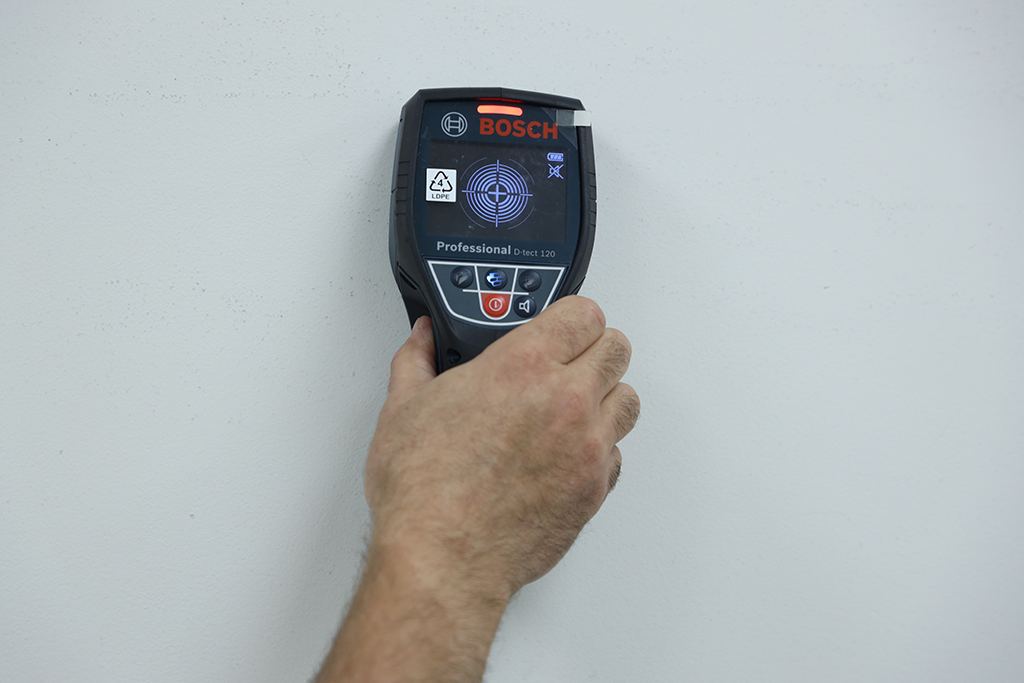
This device detects ferrous and non-ferrous metals, power lines, and wooden substructures. It features both an internal and external battery, so you’ll never have to down tools for a recharge. If the D-TECT 120 detects electrical wires, pipes, or other objects, it will alert you with both an audible and visible signal. The simple buttons that allow you to choose different measurement types make this radar-based scanner very user-friendly.
Pros
- Flexible powering
- User-friendly
Cons
- Hard to use for casual DIYers
- Pipe detector isn’t dust- or splash-proof
- Very high cost
Dewalt DW0150 1-1/2: Entry-level Budget-Friendly Option
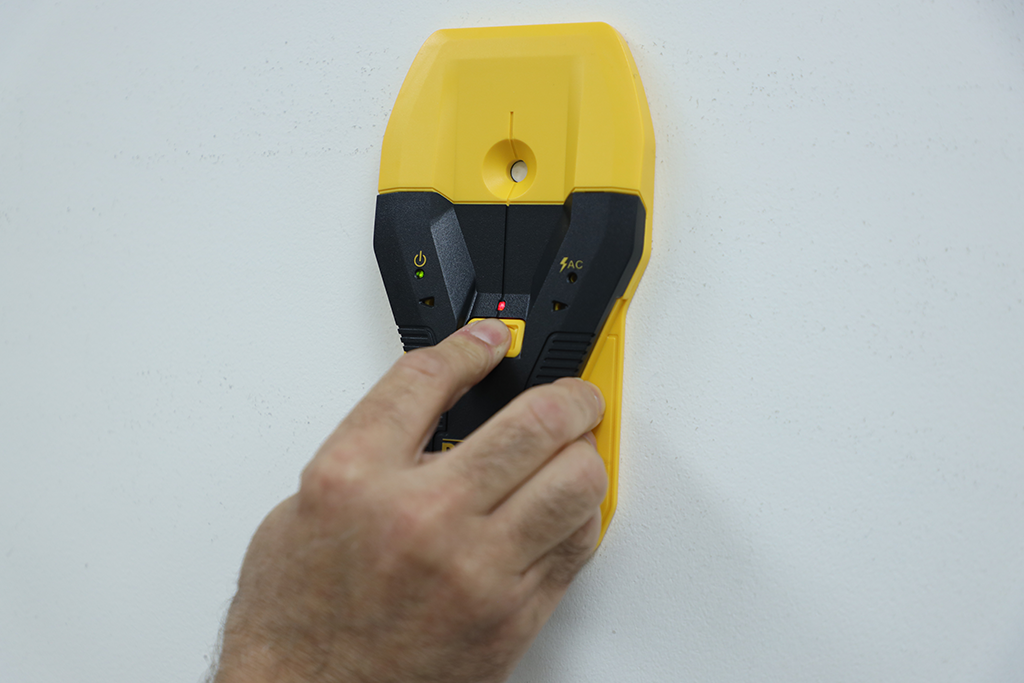
The Dewalt DW0150 offers an exceptionally economical approach to stud finding. Its compact design and simple LED display make it a great choice for occasional DIY projects.
Pros
- Affordable stud finder for drywall
- Compact and lightweight design
Cons
- Limited detection depth of 1-1½”
- May struggle to find objects deep within walls
- Unreliable for detecting pipes
- Audio signal isn’t the clearest indication
Franklin ProSensor M210: Simple to Use
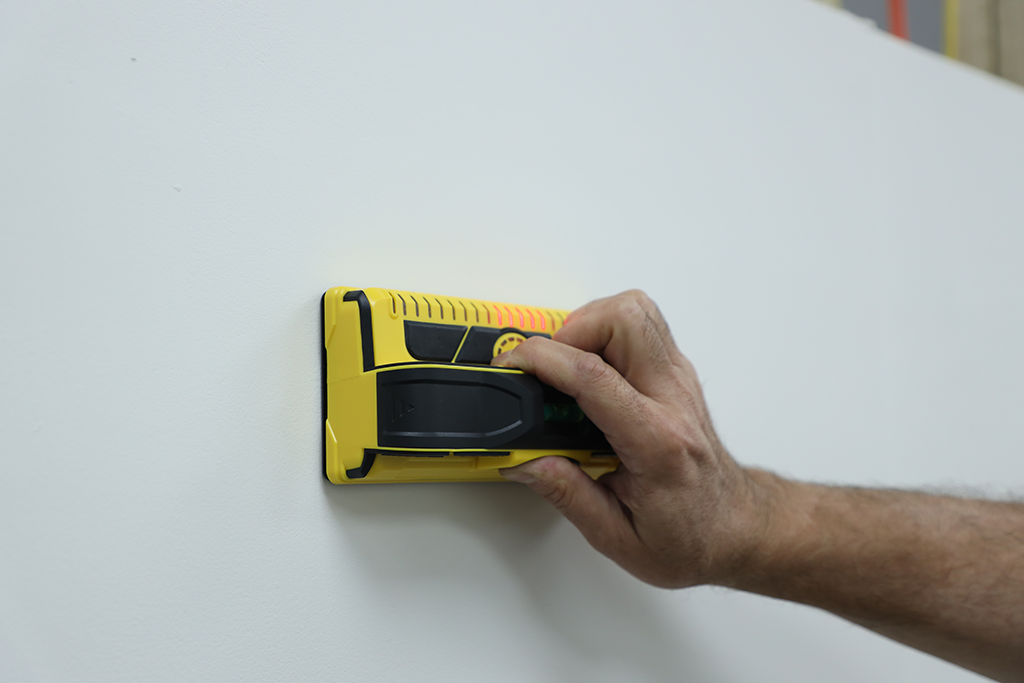
The Franklin Sensors ProSensor M210 is designed for hassle-free stud finding. It also detects live wires and offers a comfortable grip, a ruler, and a level for added utility.
Pros
- Well-designed ergonomics
- Integrated ruler and level for added convenience
Cons
- Lacks versatility – limited to basic stud detection
- Less accurate on thicker drywall
- Cannot detect pipes
- LED lights make it impossible to distinguish what element is actually detected
Zircon A200 MultiScanner: Detects Live Wires
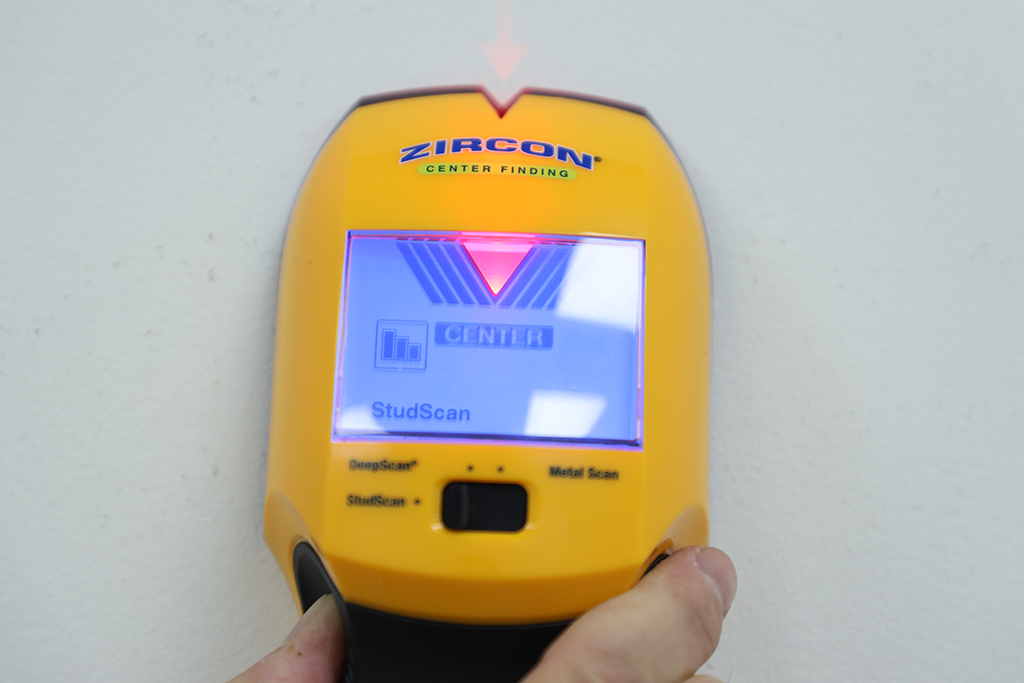
The Zircon A200 combines a very basic LCD display with audio/visual alerts for detected objects.
Pros
- Live AC wire detection
- Precision stud-finding capabilities in drywall
Cons
- Lacks the ability to detect dead wires
- Detection isn’t as deep as some other options on the market
- Struggles to distinguish between metal studs and conduits
Comparing the Best Stud Finders of 2024
We placed the best stud finders of 2024 side-by-side to help you pick the best one for you.
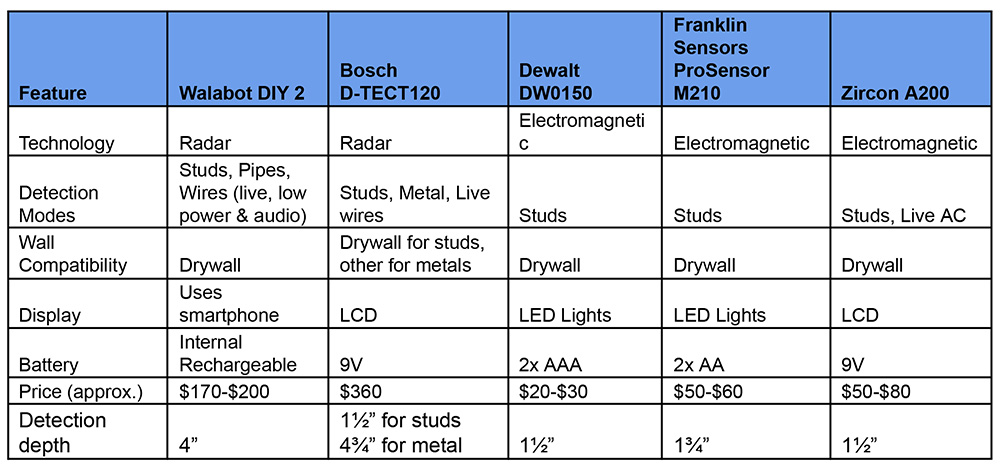
General Pro Tips: How to Use a Stud Finder
- Test on a known stud: Before tackling your project, locate an obvious stud (near outlets or light switches) and test your device. This familiarizes you with how it works and if it’s functioning as expected.
- Mark as you go: Once you find a stud, mark the center and the edges with a pencil. This helps with alignment and spacing if you’re hanging multiple items.
- Sweep multiple times: Stud finders can be finicky. Sweep horizontally a few times at varying heights to confirm your stud’s location.
- Consider wall thickness: Thicker walls might hinder stud finders. Choose a model with a deeper detection range if you’re working with thick walls.
General Pro Tips: How to Use Different Kinds of Stud Finders
- Electromagnetic Stud Finders: These are sensitive to electrical fields. Be aware that live wires near where you’re scanning can give false readings.
- Radar-based Stud Finders: Calibrate the device as per the instructions to ensure optimal accuracy when visualizing what’s inside your wall.
Hope you enjoyed our run-down of the best stud finders in 2024. Whichever one you decide on, best of luck with your upcoming projects and happy scanning.
Post sponsored by Walabot

